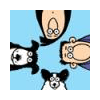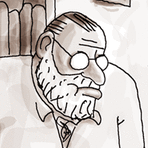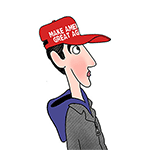$500 hair appointments are becoming the norm as the cost of cuts and colors rise
Published in Fashion Daily News
PHILADELPHIA -- Erica Kovelman pays about $2,000 a year to maintain her honey blonde locks and keep her naturally brunette roots at bay.
“I definitely am hitting a point where I’m like ‘this is very expensive,’” said the 30-year-old Philadelphia resident. But she keeps paying to maintain professional appearances.
Kovelman has felt the financial sting more as the bill for each color-and-cut appointment has increased to between $400 and $500, plus a 20% tip, she said. A few years ago, it was closer to $300.
She’s far from alone: The cost of personal-care services — which also include dental, shaving, and other grooming — have jumped 27% nationwide since 2019, according to the Consumer Price Index.
In the Philadelphia area, a balayage treatment, a more natural-looking coloring technique, costs $264 on average, an increase from $193 in 2021, according to data from the salon-booking platform Vagaro, while a partial highlight has jumped from $167 to $203 over the same period.
At high-end salons across the region, stylists said a routine appointment of highlights, a hair treatment, a haircut, and a blow-dry can easily end up between $400 and $500 before tip.
“Ten years ago, that would have been unheard of unless you were in New York or Miami,” said Salvatore Patane, owner of Le Reve Salon & Barber Shop in Cherry Hill.
Patane, a 28-year veteran of the industry, and other local salon executives said they have had no choice but to raise prices due to rapid cost increases that have strained their small businesses since the start of the pandemic.
Between 2022 and 2023 alone, Le Reve’s expenses — including on hair color and other products — increased about 30%, he said. But the salon in recent years has increased prices for its services by only 8% to 11%, a rate Patane said kept pace with inflation without turning off clients.
At the same time, social media has inspired clients to get more creative, which often means more products and a higher bill.
At Sulimay’s Salon and Barber Shop in Fairmount and Sulimay’s Studio on Main in Manayunk, CEO Tara Acosta estimated the total cost of the average color-and-cut appointment has increased by $50 over the past few years.
“Now we have social media, people are coming in and they have their inspo pics,” aspirational screenshots of the hair of celebrities, influencers, and others, she said.
“It’s not just your old-fashioned foil to the root, throw bleach on and rinse it out and, maybe put on a gloss, which was the way back in the day,” Acosta said. “People are there significantly longer. There are several more steps involved. That is a big part of why color costs have gone up.”How to save money on haircuts and coloring
While demand for salon services remains strong, preventing revenue shortfalls, some clients have cut back on their hair services due to higher prices, less disposable income, or both, stylists said.
“Those personal services get put further on the back burner,” Patane said. “If the cost of food is going up, they may say ‘I’m still going to get my hair done but I may stretch it out longer.’”
For consumers, the challenge is trimming styling costs without sacrificing appearance.
They may switch to a lower-maintenance hair color that is less expensive or allows them to come into the salon less frequently.
If Cassie Brown’s clients at the Sunshine Suite in Marlton, are aiming to color their hair less often, she often suggests a “rooted balayage” incorporating more of the natural hair color.
Some customers also opt out of additional services like conditioning treatments, glazes, or toners, which refine the color. Or they choose to leave with wet hair so they don’t have to pay for a blow-dry.
Clients are making those decisions far more frequently, salon owners say, than they were five or 10 years ago.
They are also having more open conversations with their stylists about their financial situations.
“People that are budget-aware don’t have a problem being transparent about what their budget is,” said Acosta, of Sulimay’s. At her salons, which her late father founded 60 years ago, new clients fill out a form about their current hair and their hair goals, which allows stylists to provide ballpark estimates for how much it’ll cost to craft that look.
Other clients have switched to their salons’ less-experienced stylists, who can charge hundreds of dollars less for their services. Some have even become agnostic about where they go for their hair.
This past spring, Aubrey Backues, 30, of South Philadelphia, started getting her balayage done at a local Hair Cuttery, a national chain with dozens of locations across the region, instead of at a high-end salon where she would pay more than $400, after tip, just for the color.
Backues, a DHS case manager, gets hair color every six months, and alternates between a full balayage and a partial balayage. She paid $160 for the partial, plus a $40 tip, and $260 for the full, plus a $70 tip. (As a former service worker, Backues tips generously.)
The totals for her Hair Cuttery appointments also included a gloss, toner, deep conditioning treatment, cut, blow-dry, and curling. Independent salons often charge extra for these services, and those fees are sometimes costly.
“It is a shame because I’d love to be able to support a local business,” Backues said, “but the cost is almost double.”
Salon owners said many clients are still willing to pay, albeit sometimes less frequently and with fewer add-ons.
Brown recently sent an email to her Sunshine Suite clients announcing a price increase of a couple dollars per service beginning in December. Only one client asked about it, Brown said, and the woman was understanding when Brown explained why the move was necessary.
“Everyone goes to the grocery store. The prices are higher,” Brown said. “I feel like it’s almost expected.”
©2024 The Philadelphia Inquirer, LLC. Visit at inquirer.com. Distributed by Tribune Content Agency, LLC.






Comments